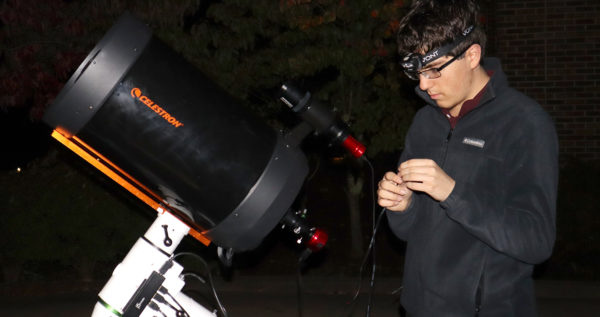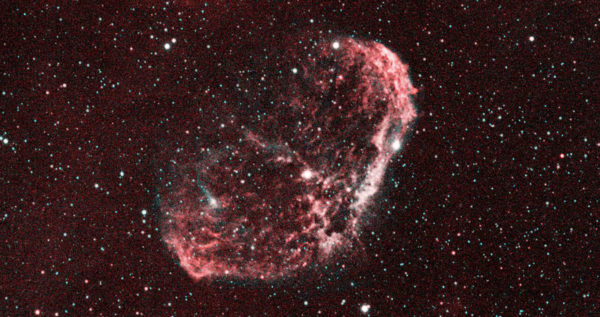
This 16-year-old’s pandemic hobby wows with amazing photos of the Pittsburgh night sky
Photo: Ryan Caginalp stands at his telescope capturing images of the night sky from his driveway. Courtesy of Gunduz Caginalp.
By Pittwire
When statewide shutdowns kept many at home for months, some people picked up new hobbies to pass the time. For 16-year-old Ryan Caginalp, that meant finding the tools and developing the skills to take high-powered images of the night sky in Pittsburgh.
Ryan, an engineering student at the University of Pittsburgh, first picked up an interest in astrophotography—the process of photographing celestial objects—in July 2019. Since then, with more time on his hands during the pandemic, he built a collection of photos featuring detailed shots of planets, nebulae and other celestial occurrences.
“I really wanted to have a look at some of these planets and see them with my own eyes,” says Ryan, who lives with this family in Squirrel Hill.
Ryan searched astrophotography forums and YouTube videos to learn the basics of astrophotography and what equipment he needed to get started. He started with a standard refractor telescope that provided solid images of the planets but wasn’t as effective for seeing nebulae or other objects in deep space.
His dad, Gunduz Caginalp, a math professor at Pitt, invested in equipment like computer programs and specialized cameras so Ryan could take his hobby as far as possible.

“Capturing images of galaxies, nebulae and other objects of deep space requires great patience, experimental precision and the ability to use computer programs,” Ryan says. “For starters, one needs a mount that is programmed to rotate in order to compensate for the Earth’s motion. A special camera that is attached to the high-powered telescope then captures hundreds of images as the mounted telescope tracks the heavenly object.”
Ryan then downloads the photos onto a special computer program and compiles them so the essential features are reinforced, while the noise and light pollution are eliminated, he explains. The images are then converted to 14 videos and processed through another program that yields a single image, synthesizing all of the information.
Ryan has a second telescope specifically for planets that uses similar methods to produce high-quality images of Saturn and its rings and the moons of Jupiter. The methodical process of locating and capturing a planet requires around 20 videos with 30,000 images each. Even with the help of specialized equipment, the process often required Ryan to spend hours outdoors in the dark to get it right.
Ryan has also produced images of the Orion and Crescent nebulae, among other celestial objects.
Prior to enrolling at Pitt, he took a number of undergraduate computer science courses at the University, including senior-level computer algorithms and machine learning courses. This fall, he participated in electrical and computer engineering research and plans to stay on that path as he advances toward graduation.
“I do plan on doing astrophotography in the future,” he says. “It’s a good hobby to have.”
Pittwire is part of the University of Pittsburgh Office of Communications.